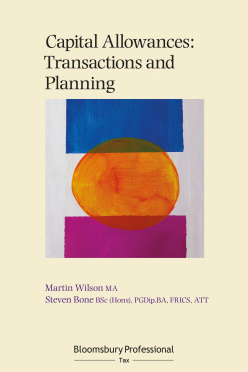Autumn Budget 2024: Stability for businesses but changes to come for DCPUs and FHLs
Steven Bone, director at Gateley Capitus and author of Capital Allowances: Transactions and Planning, examines the changes in capital allowances and land remediation relief measures following the Budget.
You can access his title online with a subscription to our Silver Tax Service, Gold Tax Service, and Platinum Tax Service.
The new Labour government's first Budget was something of a non-event from a capital allowances perspective, although, businesses will welcome the stability and clarity that should result.
At the recent investment summit Chancellor Reeves had already announced that she would keep the £1m 100% Annual Investment Allowance (AIA) cap for plant and machinery and 100% full expensing for expenditure by companies on main pool plant or machinery. This maintains the UK's position at the top of the global tax depreciation rankings for expenditure on plant and machinery, which is expected to continue to boost investment and GDP. Other types and rates of allowances also remain unchanged, such as writing-down allowances and structures and buildings allowances.
In a similar vein, it was announced that 100% first-year allowances for expenditure on zero emission cars and electric vehicle charge points will be extended by another year to April 2025. This has happened several times before so, given climate change imperatives, it does make one wonder why the Government has not just grabbed the nettle and made these 100% allowances 'permanent' like the AIA and full expensing.
In a surprise announcement, which is likely to cause considerable consternation amongst groups such as motoring manufacturers, farmers and construction workers, the capital allowances treatment of popular double-cab pickups (DCPUs) is set to change for the worse. From April 2025, the purchase of DCPUs, which had previously benefitted from favourable tax treatment as commercial vehicles rather than cars, will be treated as cars for the purposes of capital allowances (and also benefits in kind and VAT). This follows a Court of Appeal decision, which briefly led to HMRC taking the position that DCPUs were classed as cars for seven days, but then retreated in the face of lobbying from interested parties. However, the Budget announcement reverses that position and will increase the cost of buying and running DCPU's. It is likely to generate a short-term boost in UK sales until April 2025 but have a chilling effect afterwards.
Also, the Government clarified the previously announced abolition of special tax treatment for furnished holiday lettings (FHLs) by publishing a policy paper and updated draft legislation. From April 2025, FHL properties will no longer be eligible for more beneficial capital allowances treatment (and other tax benefits) but will instead be eligible for less generous ‘replacement of domestic items relief’ like non-FHL property businesses. The major catch with this is that plant and machinery capital allowances are available for expensive fixtures (for example, electrical power and lighting, hot and cold water, heating, sanitary appliances and kitchen fittings) but domestic items relief is only for comparatively inexpensive loose furniture and equipment. This will increase the tax bills for owners of former FHL properties.
The Government will also continue a few capital allowances consultations. First, to improve clarity on areas of uncertainty within the capital allowances system (for example, by improving HMRC’s guidance), second, into simplifying, condensing and reordering the capital allowances legislation (primarily the legislation concerning first-year allowances) and third, extending full expensing to assets bought for leasing or hiring (when fiscal conditions allow).
There was also a surprise capital allowances announcement about so-called predevelopment costs. In 2023 the Upper Tribunal decided that an offshore windfarm’s associated studies and project management, design and procurement costs did not qualify for capital allowances as expenditure on the provision of plant. The Tribunal concluded that design costs (and by implication, potentially, other similar costs) were just preparatory work which put the taxpayer in the position of providing plant but were not expenditure on the provision of plant. This flew in the face of the longstanding understanding of the law and accepted practice. Whilst the decision has been criticised by commentators and an appeal has been lodged with the Court of Appeal, so the decision may yet be overturned, the Government has acknowledged business concerns about the treatment of predevelopment costs and will launch a consultation in the coming months to help inform the Government’s next steps and potential options. But the stated focus is to encourage investment in renewable energy and major infrastructure projects, so might not be relevant to taxpayers who operate outside those sectors.
Alongside the imperative to develop brownfield land, the Government has also announced a welcome consultation in Spring 2025 into land remediation relief (LRR). LRR is long overdue an update, not least of which because proving a site has been derelict since 1998 is something of a challenge and one frequently sees issues in practice where it would be beneficial for the relief to be extended. For example, commonly the costs of grouting mineshafts at former mining sites or dealing with dangerous and invasive plants other than Japanese Knotweed. The aim of the consultation is to determine whether LRR is still meeting its objective of boosting brownfield land development and evaluate its value for money. This is not the first consultation into LRR because in Budget 2011, following an Office of Tax Simplification recommendation, the Government announced an intention to abolish LRR after 2012, with the final date to be set after consultation. Fortunately, that suggestion was subsequently dropped, so it is hoped that the 2025 consultation will be approached in a genuinely open-minded way and not just to resurrect the abolition plans from 2011-2012.










